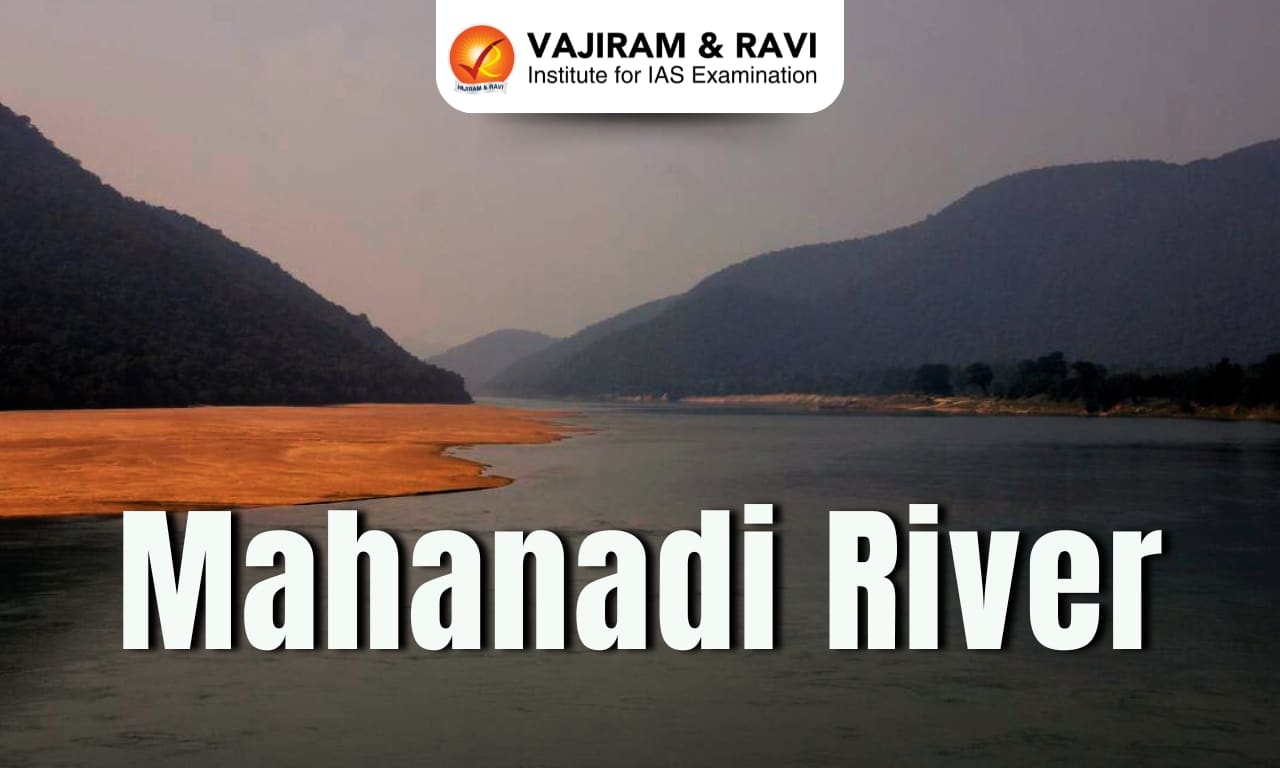Mahanadi River Latest News
After a prolonged legal battle over sharing Mahanadi River water in a designated tribunal, Odisha and Chhattisgarh have now expressed willingness to resolve the dispute amicably between themselves.
About Mahanadi River
- It is one of the major east-flowing peninsular rivers located in the states of Chhattisgarh and Odisha.
- It ranks second to the Godavari River among the peninsular rivers in respect of water potential.
- Course:
- Origin: The river originates from the Sihawa range of hills in the Dhamtari district of Chhattisgarh.
- It then flows in the eastward direction, cutting a ravine in the Eastern Ghat.
- Before joining the Bay of Bengal at False Point through several channels near the major seaport town of Paradip, the river enters the plains of Odisha near Cuttack and forms a delta.
- Length: 860 km
- The river is bounded in the north by Central India hills, in the south and east by the Eastern Ghats, and in the west by the Maikal hill range.
- The Mahanadi basin extends over the states of Chhattisgarh and Odisha and comparatively smaller portions of Jharkhand, Maharashtra, and Madhya Pradesh, draining an area of 1,41,589 sq.km., which is nearly 4.3% of the total geographical area of the country.
- It passes through several major cities and towns, including Raipur, Sambalpur, and Cuttack.
- It is considered to be one of the most active silt-depositing streams in India.
- Tributaries: Its main tributaries are Seonath, Jonk, Hasdeo, Mand, Ib, Ong, and Tel.
- Hirakud Dam:
- The Hirakud Dam, the world’s longest earthen dam (26 km), is constructed across the Mahanadi River, about 15 km from Sambalpur in Odisha.
- The dam is used for irrigation, flood control, and power generation.
- Chilika Lake: Chilika, named a wetland of international importance under the Ramsar Convention, gets 61% of its inland flow from the Mahanadi River system, mainly from its distributaries – Daya and Bhargabi.
Source: TH
Last updated on December, 2025
→ Check out the latest UPSC Syllabus 2026 here.
→ Join Vajiram & Ravi’s Interview Guidance Programme for expert help to crack your final UPSC stage.
→ UPSC Mains Result 2025 is now out.
→ UPSC Notification 2026 is scheduled to be released on January 14, 2026.
→ UPSC Calendar 2026 is released on 15th May, 2025.
→ The UPSC Vacancy 2025 were released 1129, out of which 979 were for UPSC CSE and remaining 150 are for UPSC IFoS.
→ UPSC Prelims 2026 will be conducted on 24th May, 2026 & UPSC Mains 2026 will be conducted on 21st August 2026.
→ The UPSC Selection Process is of 3 stages-Prelims, Mains and Interview.
→ UPSC Result 2024 is released with latest UPSC Marksheet 2024. Check Now!
→ UPSC Prelims Result 2025 is out now for the CSE held on 25 May 2025.
→ UPSC Toppers List 2024 is released now. Shakti Dubey is UPSC AIR 1 2024 Topper.
→ UPSC Prelims Question Paper 2025 and Unofficial Prelims Answer Key 2025 are available now.
→ UPSC Mains Question Paper 2025 is out for Essay, GS 1, 2, 3 & GS 4.
→ UPSC Mains Indian Language Question Paper 2025 is now out.
→ UPSC Mains Optional Question Paper 2025 is now out.
→ Also check Best IAS Coaching in Delhi
Mahanadi River FAQs
Q1. Where does the Mahanadi river originate from?+
Q2. The Mahanadi River flows into which water body?+
Q3. What is the total length of the Mahanadi River?+
Q4. Which cities does the Mahanadi River flow through?+
Tags: mahanadi river prelims pointers upsc current affairs upsc prelims current affairs

















